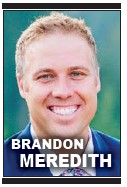By Brandon Meredith
Your business is unlike any other. Yet many Utah companies, including manufacturing, wholesaling, retailing and professional services firms, go through several phases in their operating cycles that are broadly similar. The details and timing of these steps may vary greatly, and some or all of them may overlap. However, it’s likely that your operations can be grouped into four fundamentally distinct steps — and each one calls for different types of financial solutions.
When considering a financial services provider, be sure to choose a partner who understands each step in your operating cycle. A banker who truly knows how your business works can help it succeed by offering the most appropriate options for each step of the process.
Let’s take a look at the four steps, and consider some financial solutions that can support each one.
Step 1: Acquire/Purchase
In the first phase of your operating cycle, you’re putting all the pieces into place to do business by purchasing materials and goods, engaging in research and development and even purchasing a business or expanding your own. At this time your spending needs may challenge your cash flow. To help balance the two, carefully examine the types of purchases you make and how you pay for them.
A talk with your banker should include an in-depth discussion of credit options such as a line of credit or business credit card. In addition, you’ll want to learn more about payment tools that can help you be more efficient, including wire transfers, ACH (automated clearinghouse) payments and direct payment options. If you’re using vendor credit for purchases, review the terms of your agreements and be sure they’re as advantageous as possible.
Step 2: Produce/Store/Conduct
In this step you’re getting your offerings ready for market. You might be producing finished goods, moving products in and out of inventory and getting ready to offer your services to customers. If you provide professional services, this step may include creating and testing new solutions for your clients. If you sell tangible products in, you’ll want to consider your facility, equipment and vehicle needs. Your banker can help with equipment loan and lease solutions, real estate loans including Small Business Administration (SBA) options and a range of insurance coverage.
Step 3: Sell/Deliver
Next comes the time to sell what you’ve produced or the services you offer. There are several questions you should discuss with your banker regarding this step. Do you deliver your products or services to your customers, or do they come to you? Do you own or lease company vehicles? Do you use shipping and other delivery services? Do you travel extensively on business? Do you use any personal funds for business purposes? A full-service financial provider can customize solutions to optimize the way you pay your expenses in all of these scenarios.
Step 4: Collect
Last comes the critical step in which you get paid. To streamline this phase, you’ll want to consider a range of ways to accept payment, including cash, checks, credit cards, debit cards, and electronic payments. If you process a large number of checks, ask about remote deposit services that allow you to quickly and securely make deposits from your office and lockbox options. For cash payments, you may want to consider a cash vault solution. If you offer credit terms, be sure to review your payment terms and invoicing procedures. An experienced banker with access to a comprehensive range of products and services can help you upgrade your collections process to maximize revenue and cash flow.
Keep in mind that the phases outlined here offer just a sketch of the operating cycle for typical businesses. Your operations and circumstances are unique, so take a moment to review them before you talk to a financial provider. Then when you’re ready, seek a trusted advisor who will take the time to understand your business and your needs, and tailor solutions to meet them. The process might require a bit of effort, but will pay off in the long run.
Brandon Meredith is the Wells Fargo small-business leader in Salt Lake City.








